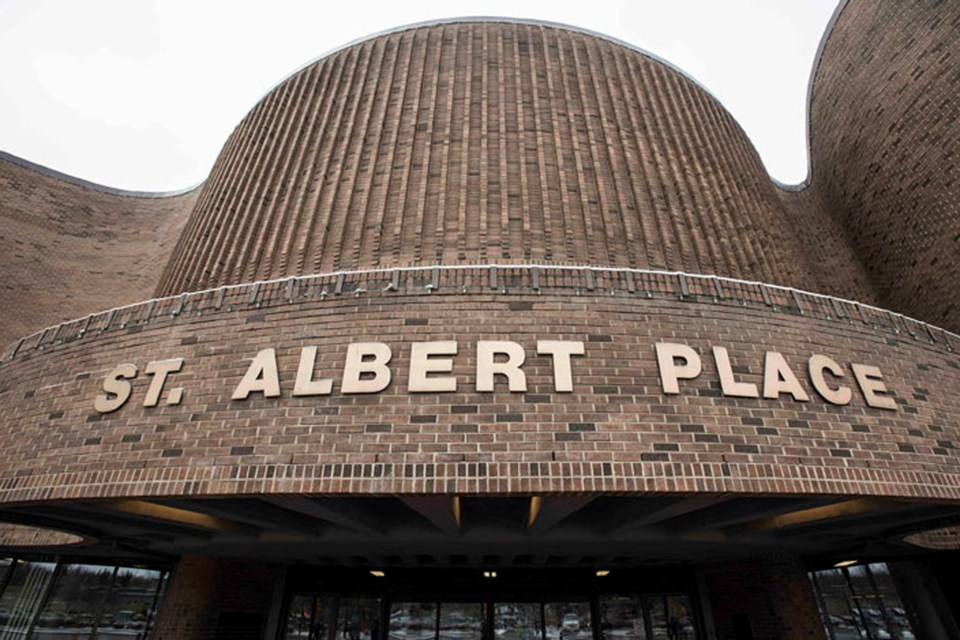One St. Albert resident is hoping the city will address "red flags" in the case for a city-owned utility corporation before city council hears from the public on Dec. 2.
Last month, council reviewed the business case for a municipal utility corporation (MUC), which at the time was discussed behind closed doors. Since then, the city has released the case in its entirety, except for a portion detailing potential risks to the city, some of which are listed as possibly "catastrophic" before mitigation strategies are employed.
Referring to the newly released documents, resident Mike Killick spoke at council's meeting Monday, saying he sees a "huge red flag" in the consultant relying solely upon information gained from city officials and making no attempt to verify that information. The consulting firm also said it takes no responsibility for any decisions made based upon the case.
“This to me is a huge red flag,” Killick said. He added in his experience, typically consultants will want to “take credit” for their reports and make clear recommendations.
Killick’s presentation was interrupted by Mayor Cathy Heron, who said council wants feedback on the business case to only come forward at a public hearing next month.
Concluding his presentation, Killick said he felt “shut out” by Heron's decision.
Capital costs
Documents in the business case suggest millions of dollars in capital investment would be required to get new lines of service offered by the utility corporation off the ground.
An arms-length utility corporation would leave traditional utilities alone but would look at offering new services. Those could include a small-scale wastewater treatment plant that sells potable water in the region, garbage pick-up for multifamily and commercial properties, inspection and maintenance services, consulting and waste-to-energy.
The business case, produced by Grant Thornton LLP, assumed waste-to-energy and the small-scale wastewater treatment plant would not come online until 2024 and the rest would begin operations in 2021.
The documents estimate the wastewater treatment plant would need a capital investment of $3.4 million, while waste-to-energy is set at $1.2 million. (Council approved a $1-million capital budget for the waste-to-energy plant at this past Monday's meeting.)
Solid waste management could require capital expenditures in both 2021 and 2028, which would cost $6.27 million in each of those years. Infrastructure for inspection and maintenance services could cost $1.45 million in 2021 and $1.05 million in 2028.
The case warns St. Albert may not be able to capture sufficient market share to make new services viable, but it also notes St. Albert has the ability to monopolize on new services by way of a bylaw city council passed in July. Utilizing that power could be counterproductive and jeopardize existing relationships with private service providers, however.
Risks
A high-level risk assessment examined possible dangers in five categories, and while most of the risks could be reduced to almost inconsequential after mitigation techniques are employed, some lingered.
An appendix detailing the exact risks and mitigation techniques was omitted from the public case, which the city said was done to maintain a competitive edge in the market.
The financial side appears to be most at risk, according to the high-level risk assessment, drawing 10 possible risks. Five of those 10 risks were listed as “more likely than not,” "very likely" and “certain." When mitigation strategies were applied, the risks could be reduced to “minor” for seven and “insignificant” for three.
For strategic and operational risks, all five identified could have catastrophic or major impacts and are "somewhat likely." One of those risks can be mitigated to moderate, while three can be reduced to minor risks and one can be reduced to an insignificant risk.
Three possible financial scenarios were outlined in the case, and Grant Thornton singled out the third option as the one that could provide the “highest amount” of financial benefit to St. Albert. Each scenario differs in how much cash is transferred back to the city in dividends, how city assets are managed and impact on utility rates.
Under the recommended third option, the utility corporation would be profitable in its first year, returning a $1.8-million dividend. Utility rates would remain status quo, and the MUC would actually lease the city’s assets. While the utility corporation would be profitable in its first year, the dividends would steadily fall over the projected 10 years, with a $1.38-million 10-year average.
St. Albert is exploring the idea of a municipal utility corporation as a way to break into new revenue streams and offset property taxes. The cash could be utilized to help pay for a capital repair, maintenance and replacement (RMR) budget St. Albert is currently not able to afford on its own, which council has implemented a 1.5-per-cent tax increase every year in 2020-2022 to help pay for.
Council directed administration in early 2018 to draft the utility corporation business case.




